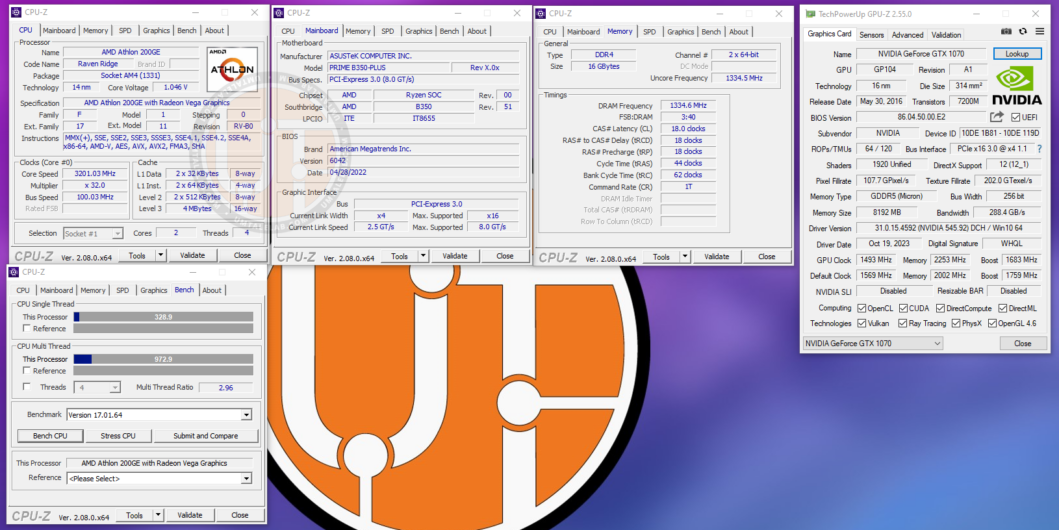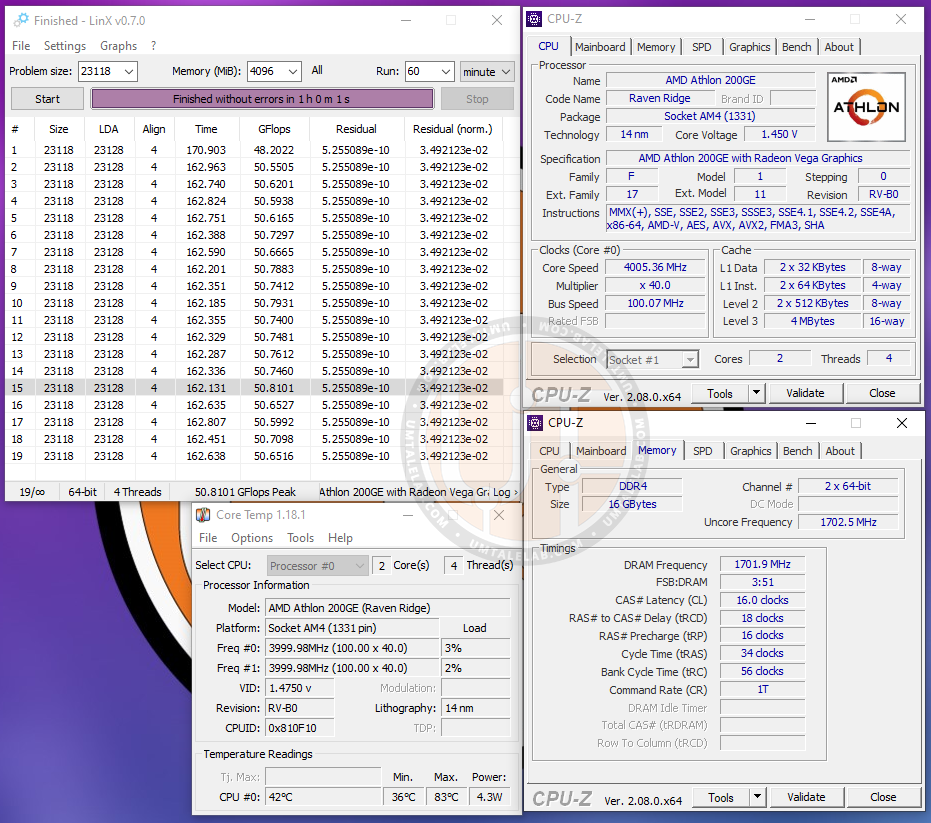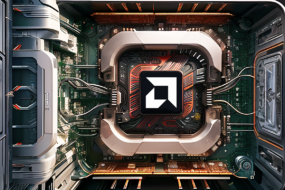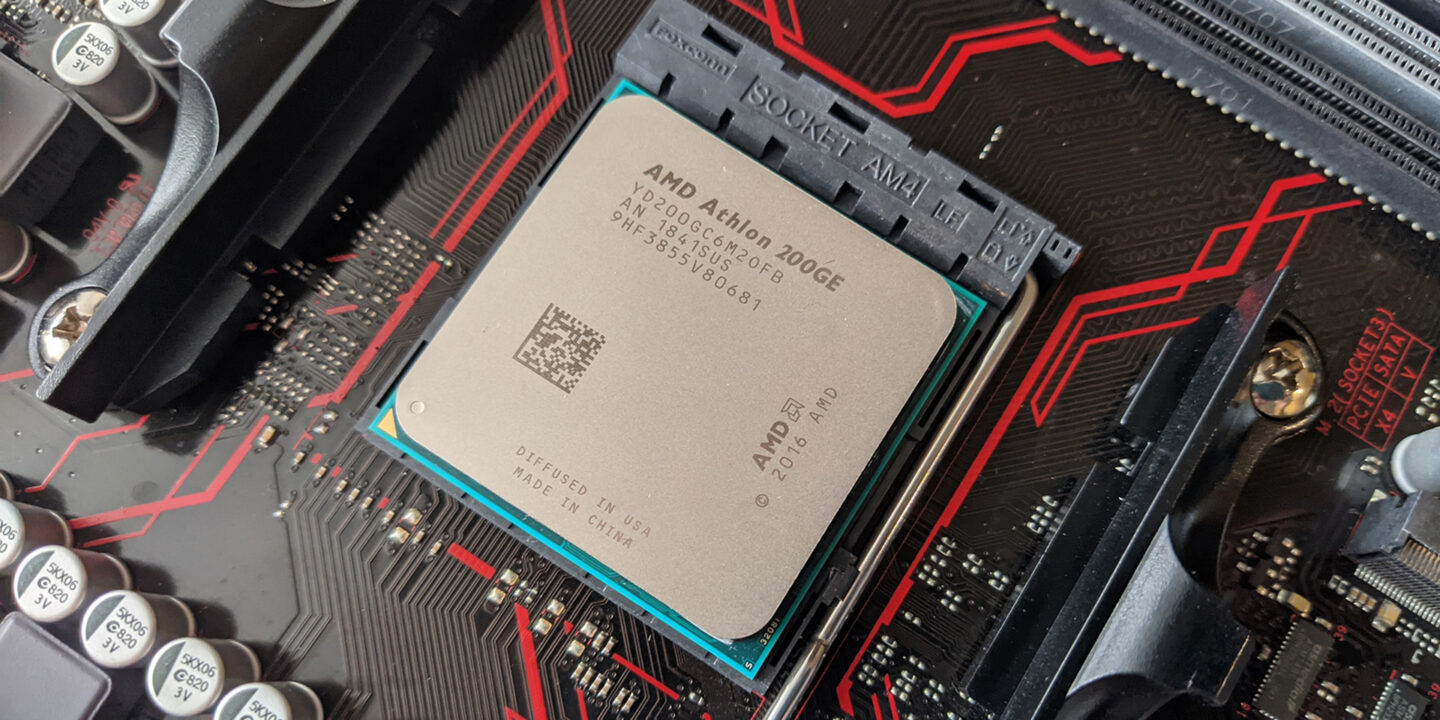
Dual-core processors have long been out of circulation and at the moment, for the most part, they are office solutions, or “chip plugs” for the time being, in order to replace them in the near future with an actual multi-core CPU.
AMD Athlon 200GE was just such a kind of cheap and relatively productive plug in its time. It was bought by the majority of frugal gamers and enthusiasts in order to replace it with a 6-core Ryzen 5 1600 or Ryzen 7 1700 in the future. However, for one reason or another, not all 200GE owners ended up realizing their vision.
In this article, we will research the performance of a 2-core/4-thread ultra-budget solution and try to answer the question: whether such a processor can be used in a gaming PC in 2023.
It should be noted in advance that the integrated GPU in Athlon 200GE Radeon Vega 3, if I may say so, is boring and does not represent anything interesting. His performance is at an extremely low level, because of which this video accelerator can cope either with very old games or with actual versions of old multiplayer projects. However, even in this case, we still decided to conduct tests in several current and relatively old games.
CPU
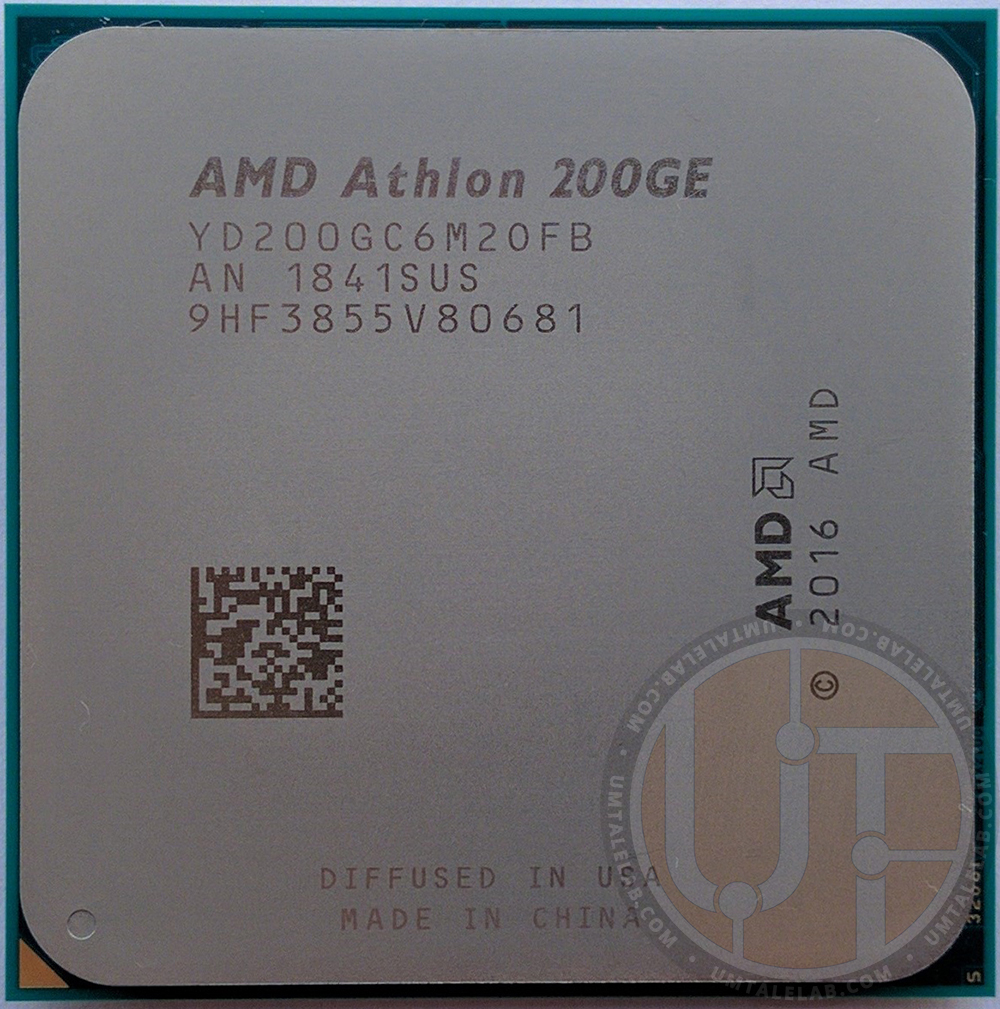
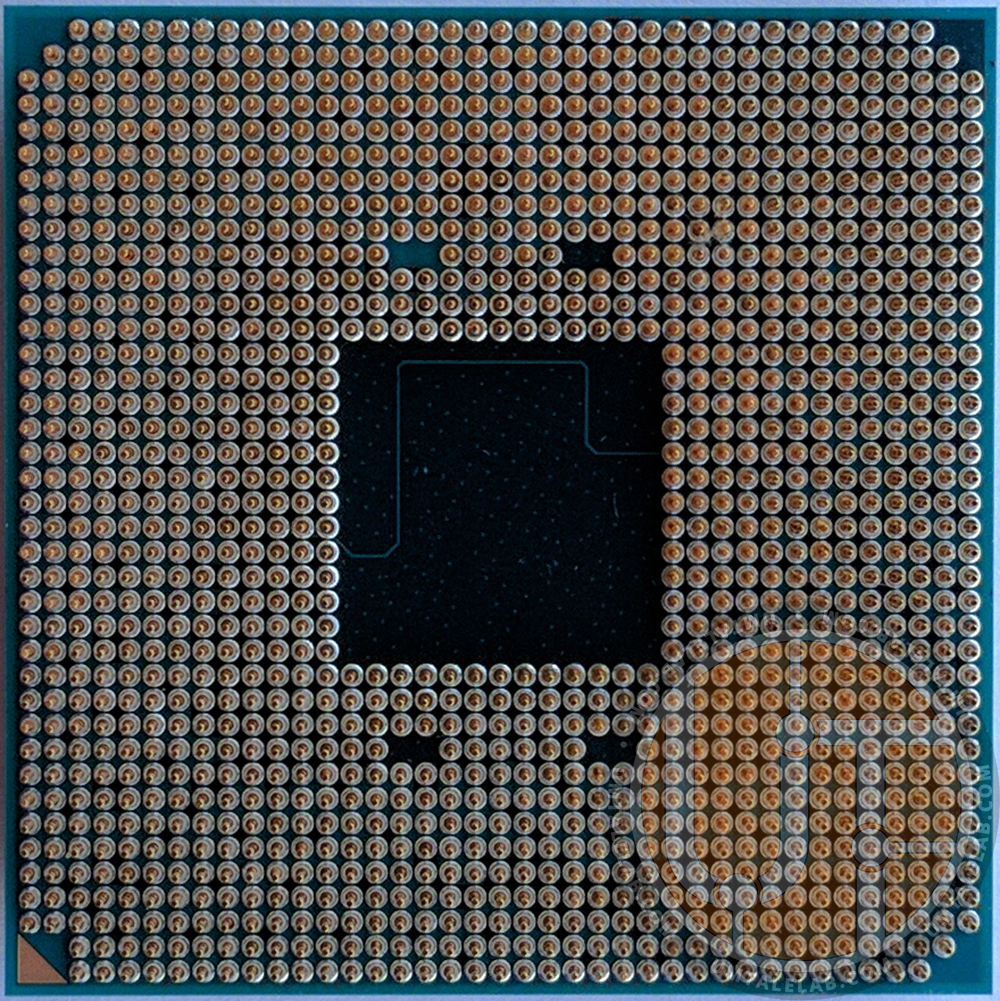
The heart of the Athlon 200GE processor is a monolithic, 2-core/4-thread 14nm Raven Ridge revision B0 die. Nominal frequency of the CPU is only 3200MHz and the saddest thing is that Precision Boost technology is not provided. However, thanks to this, the TDP level of the 2-core Zen is at a modest 35 watts.
This CPU has 512KB of second-level cache per core and a total third-level cache of 4MB. This processor is designed to be installed in motherboards with AM4 socket.
The 200GE memory controller speed integrated into the processor is tied to the RAM frequency and fully depends on its dividers. Thus, according to AMD factory specifications, this CPU is able to function only with DDR4@2667MHz RAM. However, this is quite easy to fix. But we’ll talk about it in detail a little later.
It should also be taken into account that Athlon 200GE processor has only four external PCI-Express 3.0 lanes. Thus, when installing a discrete video card in a system with this CPU, the speed of its communication with the chip will be significantly reduced. The latter feature makes dual-core Athlon not the best choice for 75% of existing discrete video adapters.
In addition to all of the above features, it should be noted that the 2-core Zen has SSE4.2, FMA3, AVX and AVX2 instructions, which are so necessary in the realities of 2023.
CPU and RAM overclocking
First of all, it should be noted that not all motherboards are able to overclock processors with conditionally locked multiplier, which is Athlon 200GE. For example, one of our lab boards ASRock B450M-HDV doesn’t allow changing neither the multiplier nor the reference frequency of the test CPU, but at the same time ASUS Prime B350 Plus doesn’t have any difficulties with overclocking the AMD budget solution (BIOS can control both multiplier and BCLK frequency).
Taking into account that Zen architecture has no direct dependence on BCLK overclocking like Bulldozer/Piledriver we decided to overclock Athlon 200GE by changing the multiplier.
At nominal voltage of 1.05 volts we found the chip stable at 3400MHz. 3600MHz was reached at 1.20 volts, but further on cores overclocking was extremely slow. 3800MHz became a reality only after increasing the reference voltage to 1.325 volts. 1.4 volts were required to reach 3900MHz and finally, to reach the psychological point of 4GHz the cores needed an impressive 1.45 volts (1.44 volts according to multimeter measurements under load).
Undoubtedly, overclocking is a lottery, nevertheless, it should be noted that it took only 1.425 volts to reach 4100MHz on the lab Ryzen 3 1200.
Now let’s move on to overclocking RAM and Infinity Fabric bus. Fortunately, this is where things turned out to be a bit more interesting. First of all, let’s fix DDR4 voltage at 1.36 volts and latencies at the formula 16-18-16-34 (we chose latencies according to the tests performed beforehand, they may be different for you, so use timings from the XMP profile).
At nominal voltage SoC memory was able to reach 2933MHz, and the bus 1466MHz, with an increase to 1.05 volts – 3200/1600MHz, 1.1 opened the way to 3333/1666MHz and at 1.175 volts Infinity Fabric was completely stable at an impressive frequency of 1700MHz, DDR4 in turn reached 3400MHz.
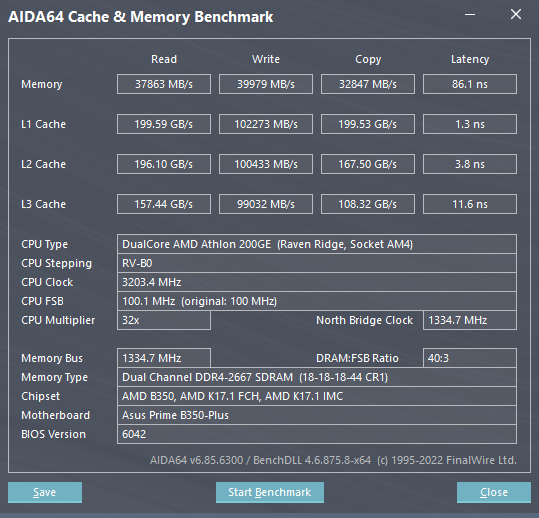
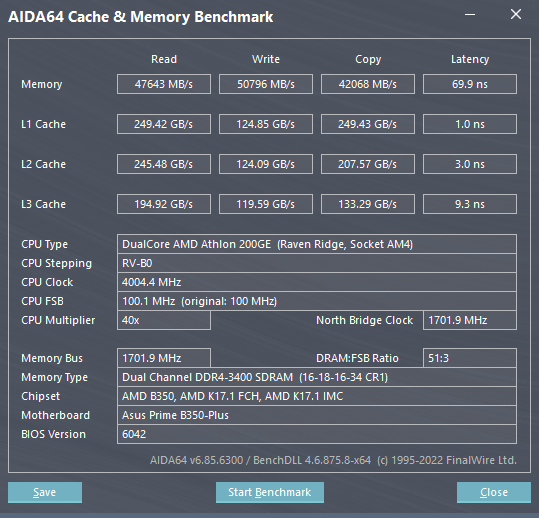
With these parameters the system was absolutely stable in the Linx 0.7.0 AVX stress test. In a simpler AIDA stress test with similar voltages Athlon 200GE reached 4075MHz.
If you are going to do the same experiment again, please note the following: it is not very safe to increase the voltage above 1.4 volts. Therefore, all manipulations you perform with your hardware are at your own risk!
The outcome of our research was the following values:
- CPU frequency is 4005MHz (multiplier 40, BCLK frequency 100MHz);
- CPU core voltage – 1.45v;
- Частота DDR4 – 3600MHz, timings 16-18-16-34;
- DDR4 voltage — 1.360v;
- Infinity Fabric – 1800MHz;
- SOC voltage (IF) — 1.170v;
Further increase of input voltages did not lead to anything. And if there are no claims to the overclocking of RAM / Infinity Fabric bus, the final frequency of cores was a bit disappointing.
Test bench, software and CPU settings
Test bench
- CPUs — Core i5-2500K, FX-4350, Athlon 200GE, Ryzen 3 1200;
- CPU cooling — Cooler Master Hyper 212 Black Edition (RR-212S-20PK-R1);
- AM3+/LGA 1155 RAM — 2 планки по 8ГБ HyperX Genesis Na’Vi Edition (KHX16C9C2K2/8) общим объемом в 16ГБ;
- AM4 RAM — 2 планки по 8ГБ Corsair Vengeance RGB PRO (CMW16GX4M2C3600C18) общим объемом в 16ГБ;
- AM3+ — ASUS M5A97 LE R2.0 (BIOS 2701);
- AM4 Motherboard — ASUS Prime B350 Plus (BIOS 6042);
- LGA 1155 ц— Gigabyte GA-Z68P-DS3 (rev. 2.0, BIOS Ua6);
- Videocard — Manli Gallardo GeForce GTX 1070 8ГБ (~2000/9000МГц, Power Limit 112%);
- SSD — KINGSTON SUV400S37120G 120,0 GB (Windows 10), KINGSTON SUV400S37240G 240,0 GB + KINGSTON SUV400S37400G 400,0 GB (Игры);
- PSU — Chieftec GPS-1250C.
Software
- Operating System: Windows 10 x64 with latest updates as of October 2023;
- Videocard drivers: NVIDIA GeForce 545.92 WHQL;
- Additional software for FPS measurement: MSI Afterburner 4.6.5;
- Games: testing was conducted on current versions of games as of October 2023;
- Game settings: considering the extremely low performance of 4-threaded solutions in modern projects, it was decided to conduct testing at the lowest possible graphics settings in 1080p resolution.
Settings of the processors under test
- AMD CPUs:
- Athlon 200GE@3200MHz, Dual Chanel DDR4@2667MHz (18-18-18-44);
- Athlon 200GE@4005MHz, Dual Chanel DDR4@3400MHz, Infinity Fabric@1700MHz (16-18-16-34, CPU Core voltage — 1.45v, SOC voltage — 1.170v, DDR4 voltage — 1.36v);
- FX-4350@4200-4300MHz, Dual-Channel DDR3@1866MHz (11-11-11-28);
- FX-4350@4731MHz, CPU-NB@2628MHz, Dual-Channel DDR3@2102MHz (11-12-12-30, CPU Core voltage — 1.44v, CPU-NB voltage — 1.375v, DDR3 voltage — 1.690v);
- Ryzen 3 1200@3100-3400MHz, Dual Chanel DDR4@2667MHz (18-18-18-44);
- Ryzen 3 1200@4100MHz, Dual Chanel DDR4@3400MHz, Infinity Fabric@1700MHz (16-18-16-34, CPU Core voltage — 1.428v, SOC voltage — 1.175v, DDR4 voltage — 1.37v);
- Intel CPUs:
- Core i5-2500K@3300-3700MHz, DDR3@133MHz;
- Core i5-2500K@4714MHz, DDR3@1912MHz (CPU Core voltage – 1.452v, QPI/Vtt voltage – 1.250v, CPU PLL voltage – 1.800v, DDR3 voltage 1.680v);
Test results
Archiving data
7-Zip
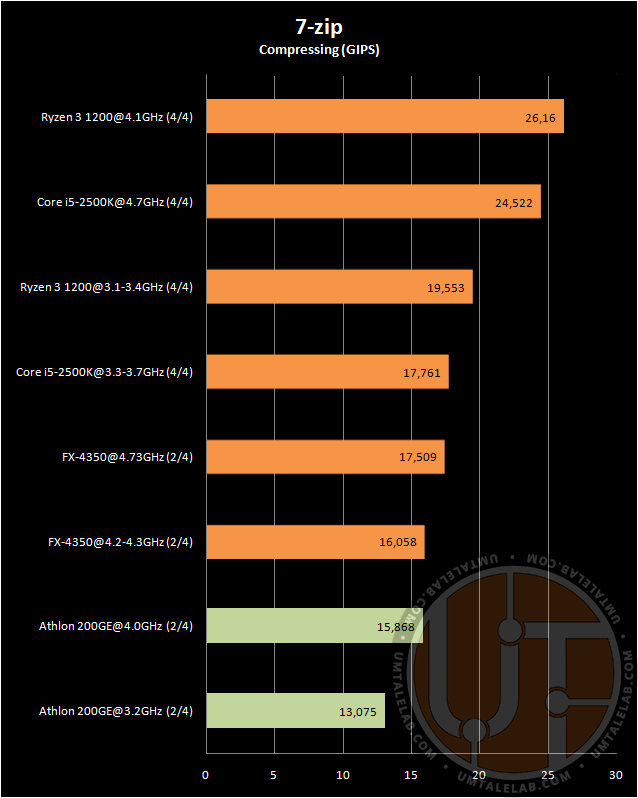
The results of Athlon 200GE in the free Archivator 7-Zip do not cause much excitement. The 2-core Zen managed to yield to the 2-module FX-4350 both at nominal frequencies and in overclocking.
3D rendering
Blender 3.6.5
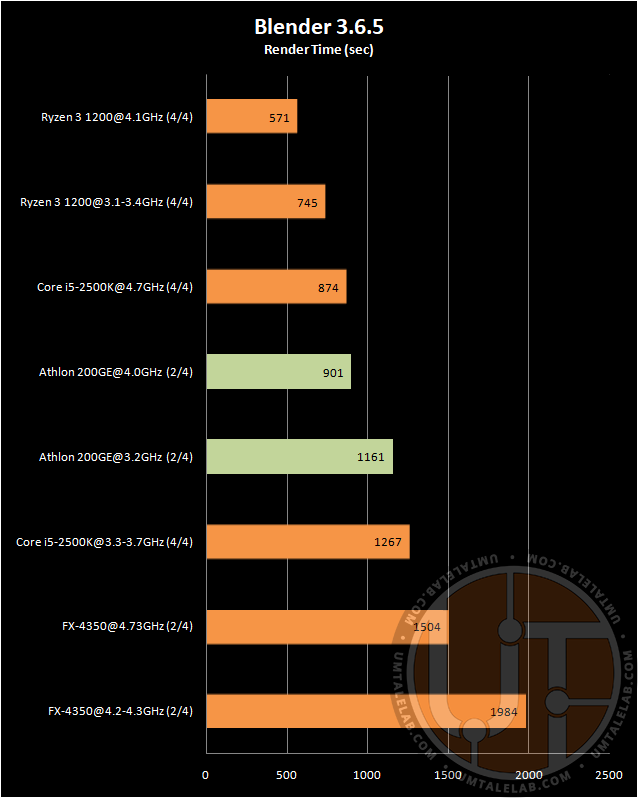
But in the final rendering of the free 3D-editor Blender 3.6.5 the 200GE chip shines. At base frequencies the 2-core was able to overtake both its direct competitor in the person of stock and overclocked FX-4350 and Core i5-2500K functioning at nominal frequency. Overclocking to 4GHz allowed Athlon to match the 4-core Sandy Bridge boosted to an impressive 4.7GHz.
Cinebench R23
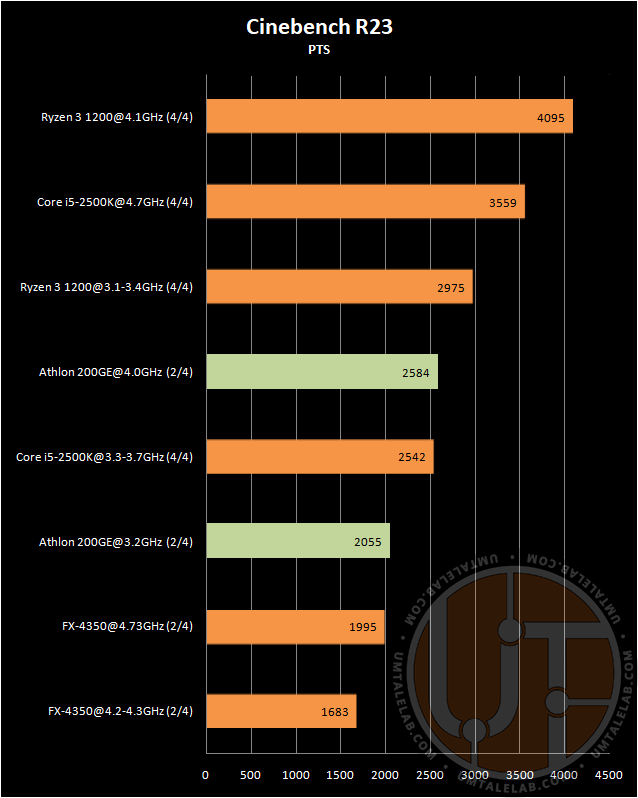
In the Cinebench R23 benchmark we expected about the same results as in Blender, except for the Core i5-2500K: in this test Intel processor proved to be much stronger.
Only when overclocked to 4GHz Athlon 200GE was able to approach the performance of the stock Sandy Bridge.
Internet surfing
JetStream 2.01
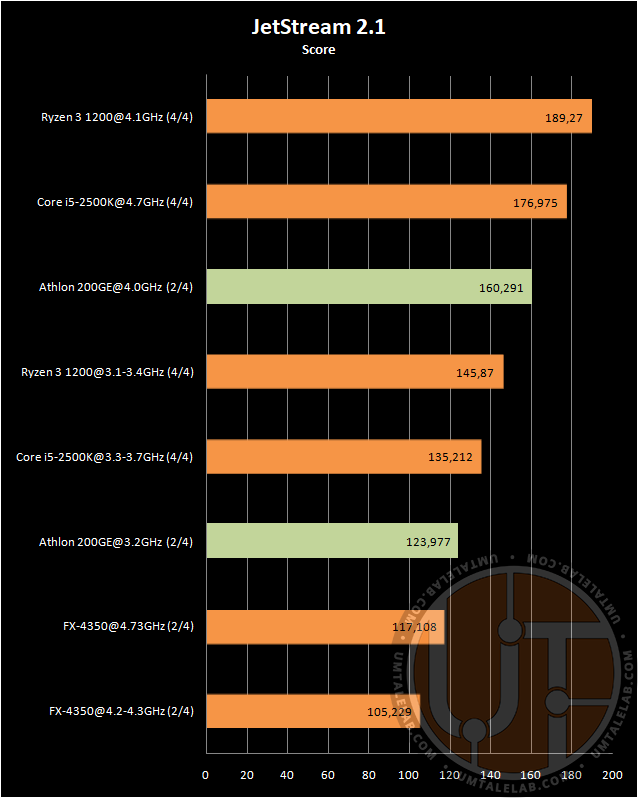
Speedometer 2.01
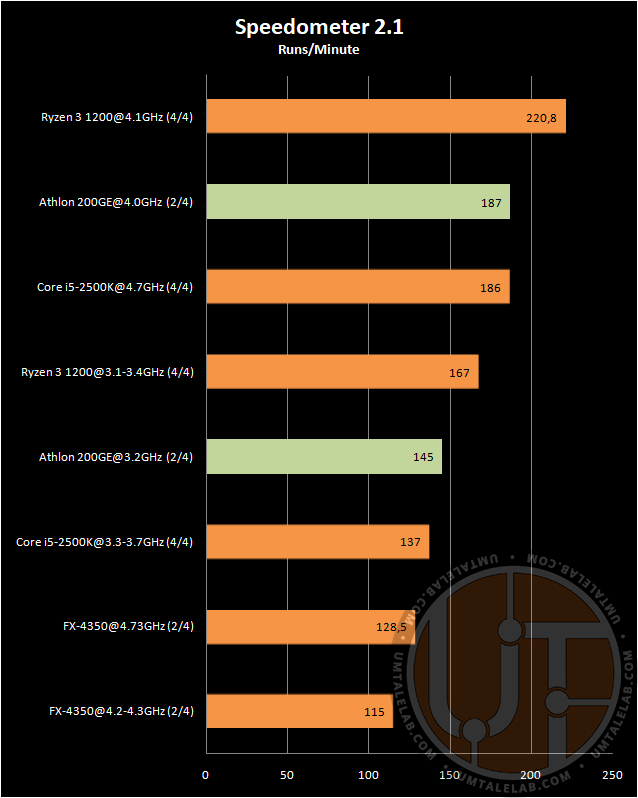
Kraken JavaScript Benchmark
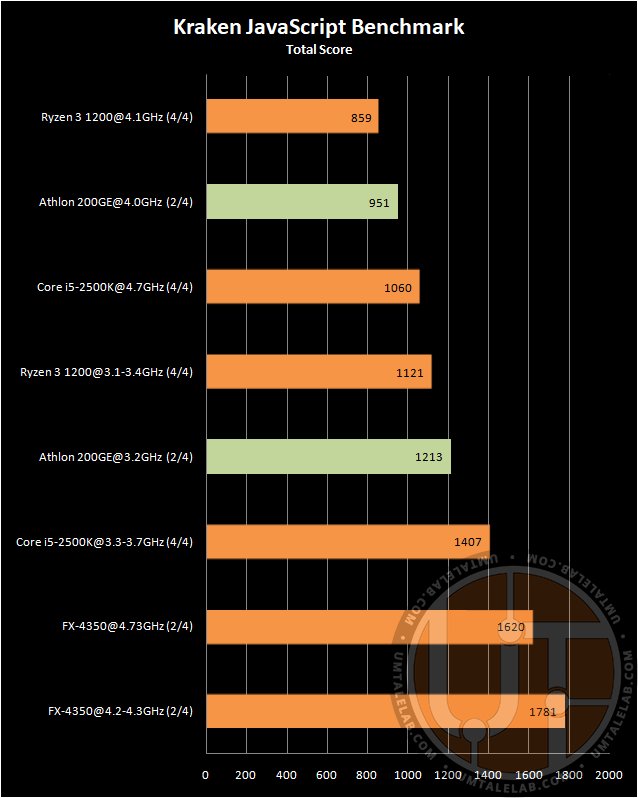
What AMD’s 4-threaded CPU is still strong in is Internet surfing. The explanation for these results is extremely trivial: browsers are still unable to utilize a large number of processor threads, which makes the relatively-up-to-date Zen architecture, even with only two cores/four threads, slightly faster than the 4-core Sandy Bridge.
Gain from overclocking in program tests
| Application: | Athlon 200GE@4000MHz |
|---|---|
| 7-Zip | 21.36% |
| Blender 3.6.5 | 22.39% |
| Cinebench R23 | 25.74% |
| JetStream 2.01 | 30.08% |
| Speedometer 2.01 | 28.97% |
| Kraken JavaScript Benchmark | 27.55% |
Games
Even though Athlon 200GE is endowed with all the “pluses” associated with the Zen architecture, such as AVX2 instructions, but unfortunately, this does not allow the dual-core chip to comfortably pull most games released in 2023. Projects like Starfield and Alan Wake 2 were not included in this test solely because of extremely low performance even with all possible patches and fixes. However, even in this situation we have something to please you.
Counter-Strike 2
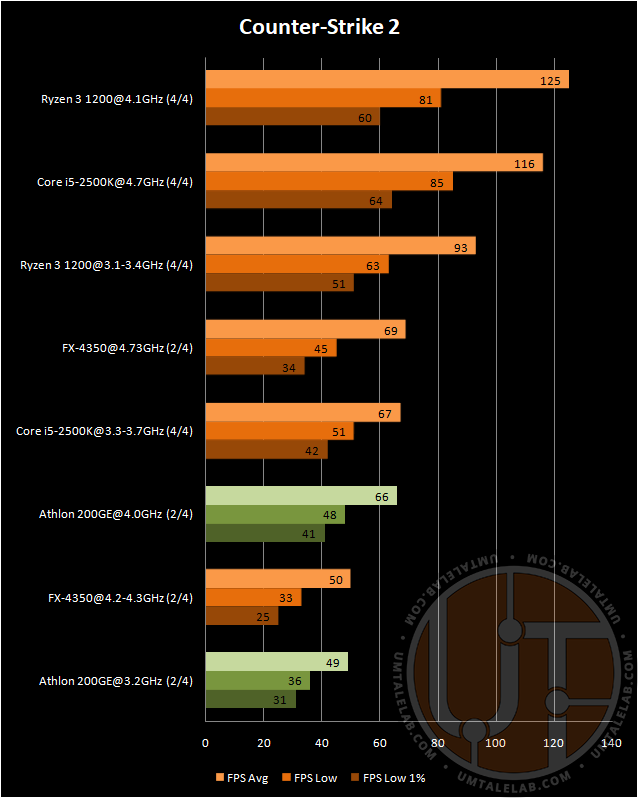
Let’s start with gaming disciplines. The recently released Counter-Strike 2 runs very mediocre on most budget processors and Athlon 200GE is not an exception. However, overclocking up to 4GHz somewhat corrects the situation and allows you to achieve the cherished 60 frames per second from the ultra-cheap CPU.
However, here is another curious thing: old boys like stock Core i5-2500K and overclocked FX-4350 show results no worse than overclocked Athlon 200GE, and overclocked 2500K even comes close to Ryzen 3 1200@4100MHz.
Dota 2
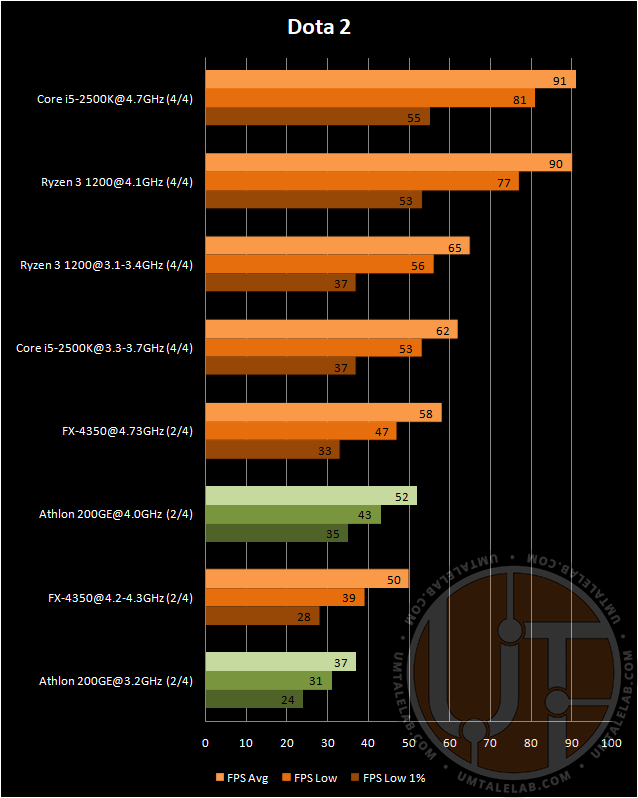
In Dota 2 the situation for 200GE is not the most favorable. The 2-core Zen managed to lose to a rather old FX-4350 both at nominal frequencies and in overclocking, while Core i5-2500K and Ryzen 3 1200 remained far beyond Athlon’s reach.
Baldur’s Gate 3 [Patch #4]
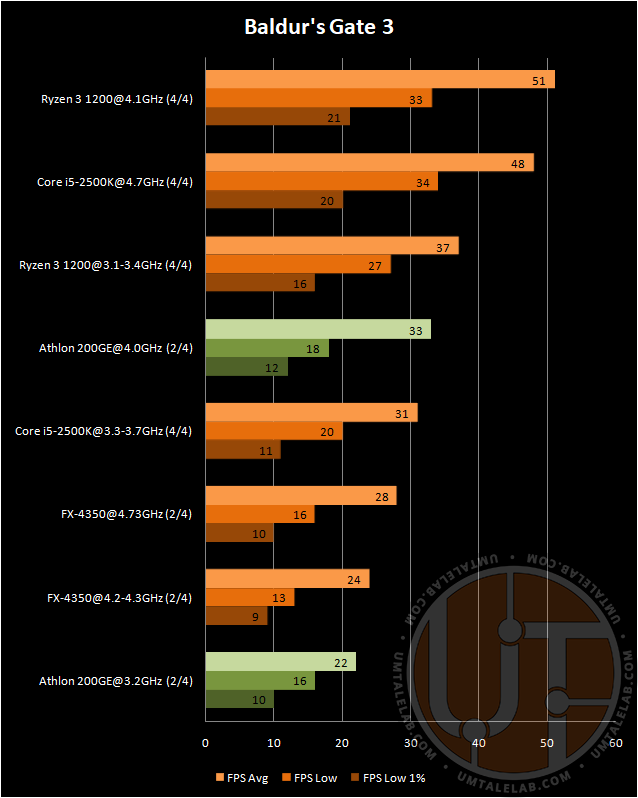
The heavy Baldur’s Gate 3 did not conquer the 2-core Zen at all. Of course, this project is not full of action allelements (who would doubt it – the game is turn-based), but even in simple movement between locations on Athlon 200GE there are serious problems. And in the CPU-intensive city of Baldur’s Gate, the minimum FPS is at a critically low level.
At the same time, it should be noted that the 200GE chip is quite capable of familiarizing an unpretentious player with the world of Baldur’s Gate 3.
Cyberpunk 2077 Phantom Liberty [Patch 2.02]
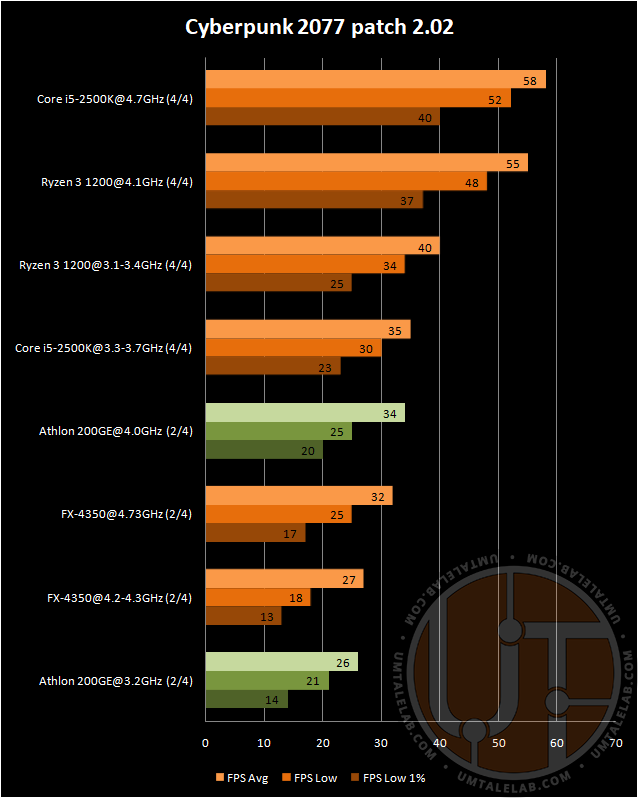
In the Phantom Liberty update for Cyberpunk 2077 the functioning of REDengine has changed a bit, because of which weak CPUs actually stopped being able to cope with the game even at minimum graphics settings. Overclocked Athlon 200GE demonstrates console framerate, and under the expression “console framerate”, we mean the frame rate that the game gave on the last generation of gaming consoles like PS4/X-One. player with the world of Baldur’s Gate 3.
But on the stock 200GE gamer is unlikely to get any pleasure from the game. Freezes will follow you literally on any locations, plus, some game objects will load right in front of the player.
From the obvious pluses we can note that on Athlon 200GE Cyberpunk 2077 Phantom Liberty runs significantly more stable than the same Baldur’s Gate 3.
Hogwarts Legasy
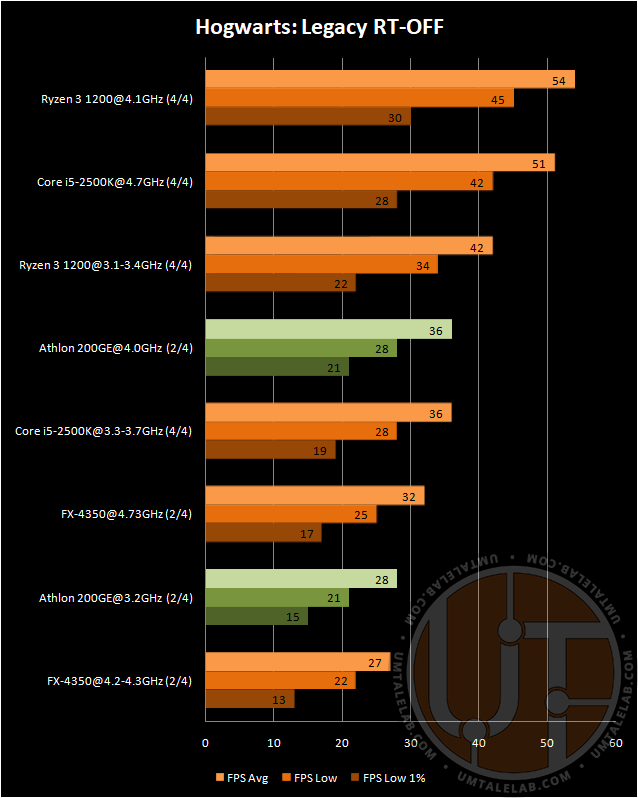
Hogwarts Legasy runs on a 200GE processor slightly better than Cyberpunk 2077, but the problems are about the same: in large locations the player will experience freezes, and in the castle there are long subloads of rooms and halls.
Overclocking to 4GHz slightly improves the situation and even allows the 2-core Zen to beat the stock Core i5-2500K lightly in terms of minimum FPS, but overall the framerate remains far from acceptable.
The Witcher 3: Wild Hunt Next-Gen Update [Patch 4.04]
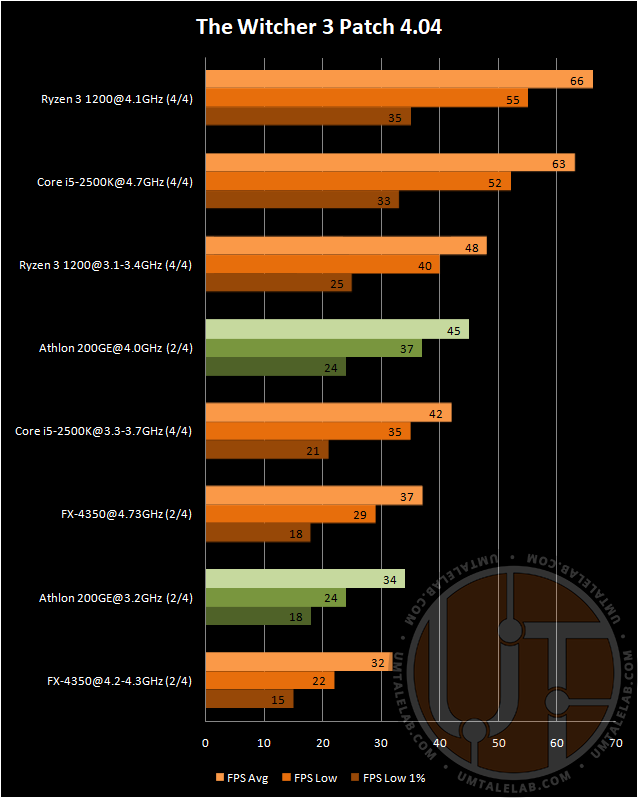
Лучшего всего из однопользовательских игр на тестовом чипе работает The Witcher 3: Wild Hunt Next-Gen Update. Даже на базовой частоте Athlon 200GE способен обеспечить чуть больше 30 кадров в секунду, а в разгоне до 4ГГц средний FPS доходит до 45.
| Game: | Athlon 200GE@4000MHz |
|---|---|
| Counter-Strike 2 | 34.69% |
| Dota 2 | 40.54% |
| Baldur’s Gate 3 | 50% |
| Cyberpunk 2077 | 30.77% |
| Hogwarts Legasy | 28.57% |
| The Witcher 3: Wild Hunt | 32.35% |
Radeon Vega 3 express testing results in games
Vega 3 was tested at base frequencies, as its overclocking is blocked on the motherboards at our disposal. The RAM frequency was fixed at 3200MHz, as 90% of existing DDR4 modules are designed for this mode.
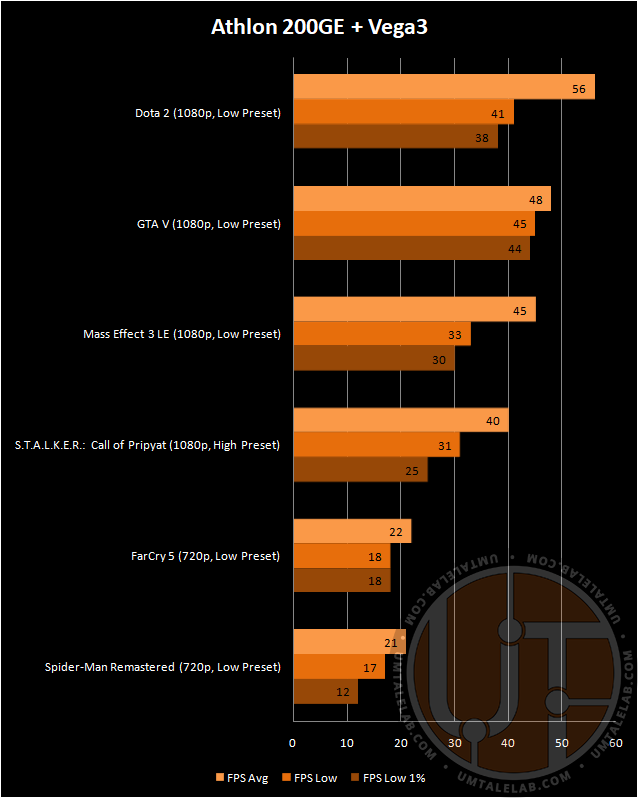
As we already wrote at the beginning of this article: you should not count on Vega 3 as the main graphics processor. This iGPU can only handle old games like GTA 5, S.T.A.L.K.E.R. or Mass Effect, as well as some multiplayer projects like Dota 2.
Conclusion
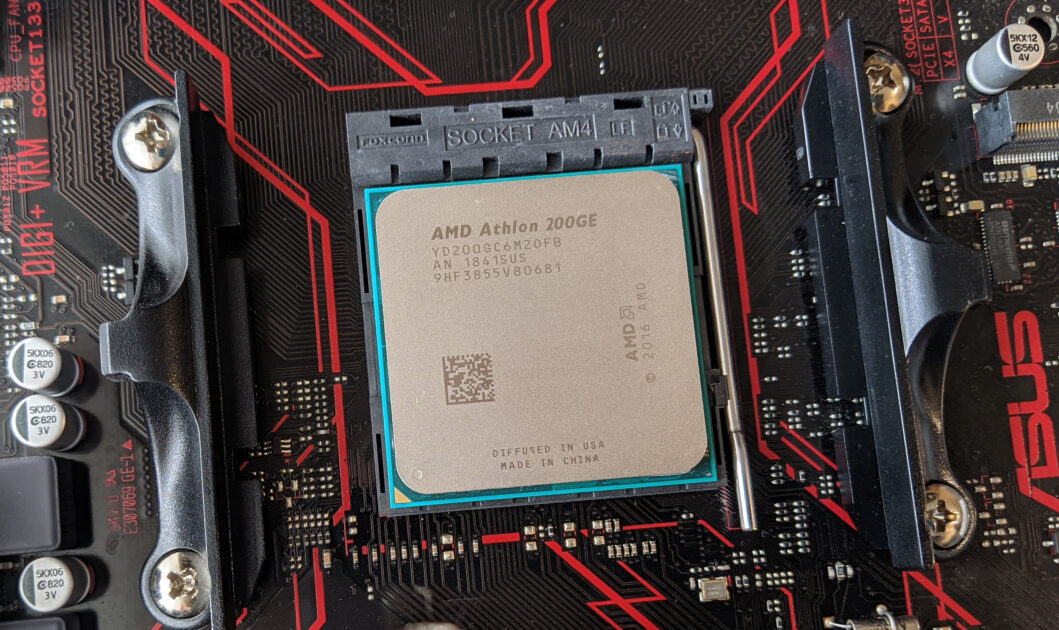
Well, it’s time to summarize the results of this material. Athlon 200GE was released a little less than 6 years ago. During this time it managed to be reborn into Athlon 3000G on the way having slightly increased frequencies. However, as we have found out today, the frequencies for a 2-core, 4-thread CPU do not matter much in the realities of 2023.
The critical lack of executive blocks in 200GE is not covered neither by the significantly increased speed of RAM, nor by overclocking up to 4GHz. Plus, the graphics processor built into the chip is also not something valuable. Vega 3, as well as the CPU inside which it is located, is limited by the presence of a modest number of executive blocks, because of which, even with the possibility of overclocking, performance would not change significantly.
In fact, the only thing the owner of Athlon 200GE can rely on is the potential of the AM4 platform, and it is really great. Even on a budget board based on the A320 system logic set you can install a 6-core R5-1600 or R5-3600 chip with a high probability (be sure to check the compatibility of your motherboard with these processors on the official website of the manufacturer), which will make the system more viable in the realities of 2023.
If you want a CPU with integrated graphics (APU), it’s best to turn your attention to the undeniably awesome Ryzen 5 5600G, or look for something like the 2200-2400G on the aftermarket.
